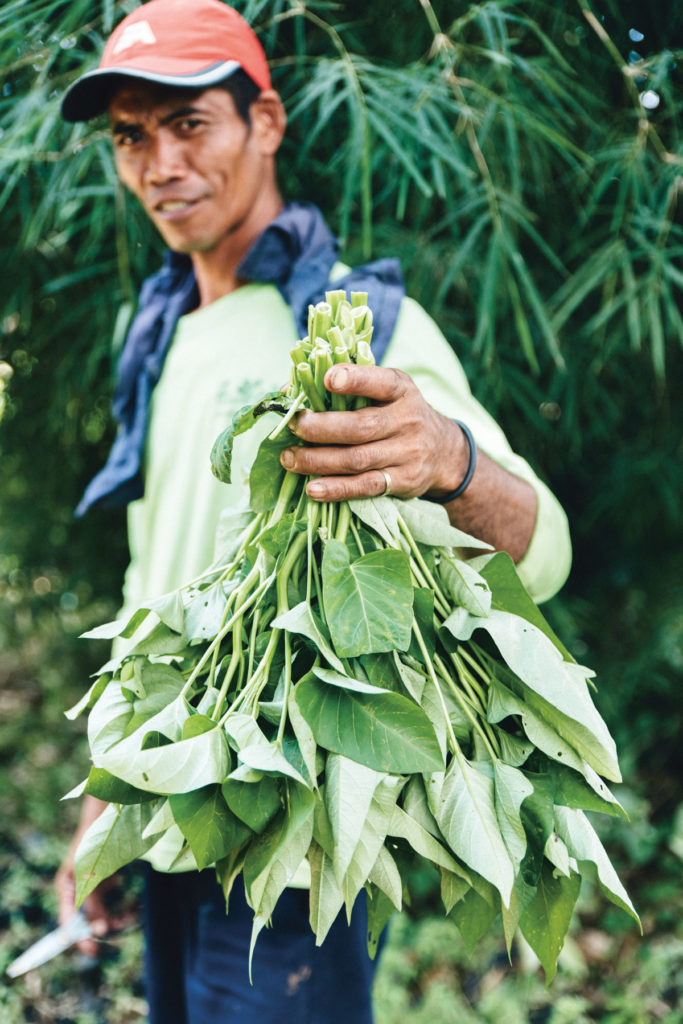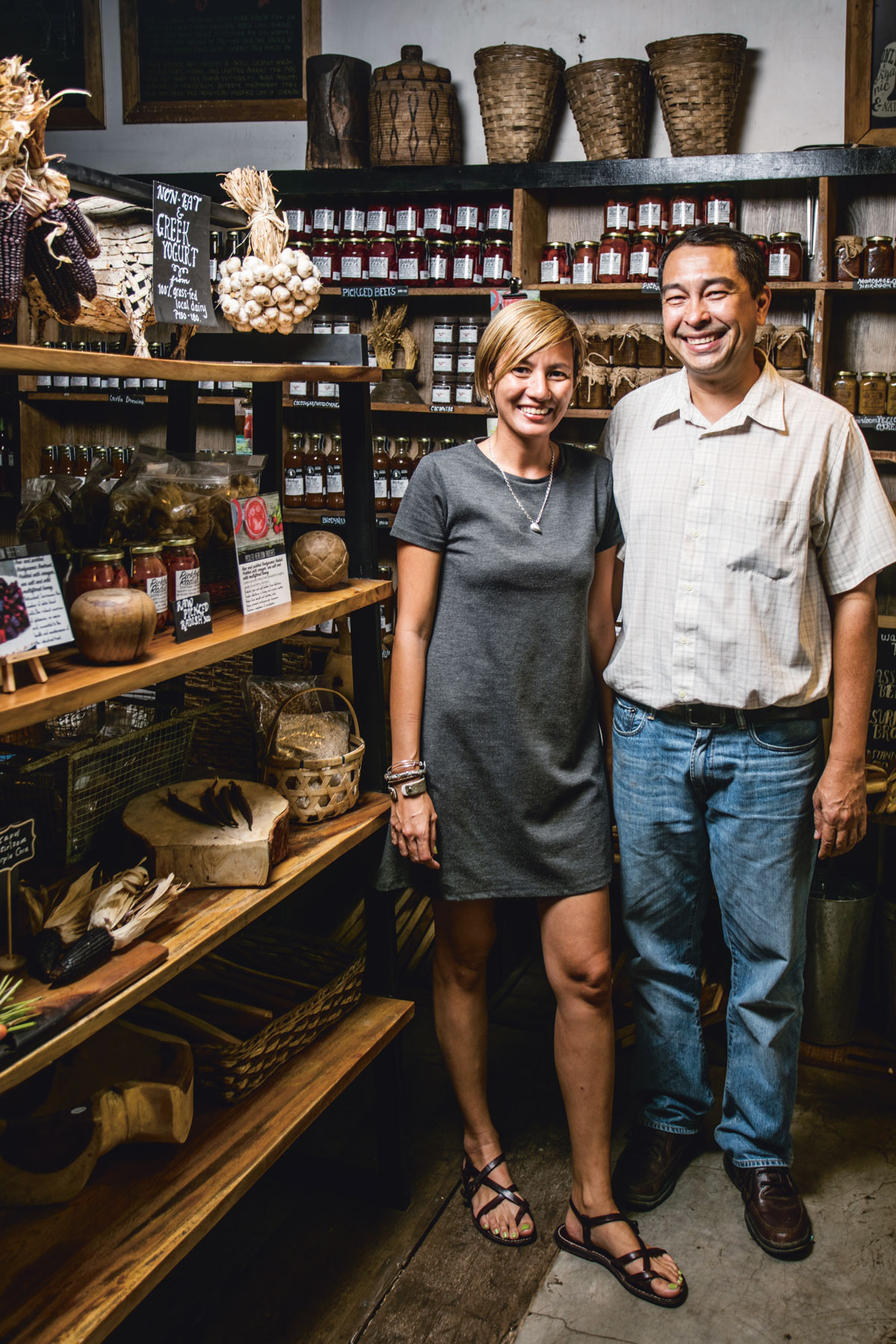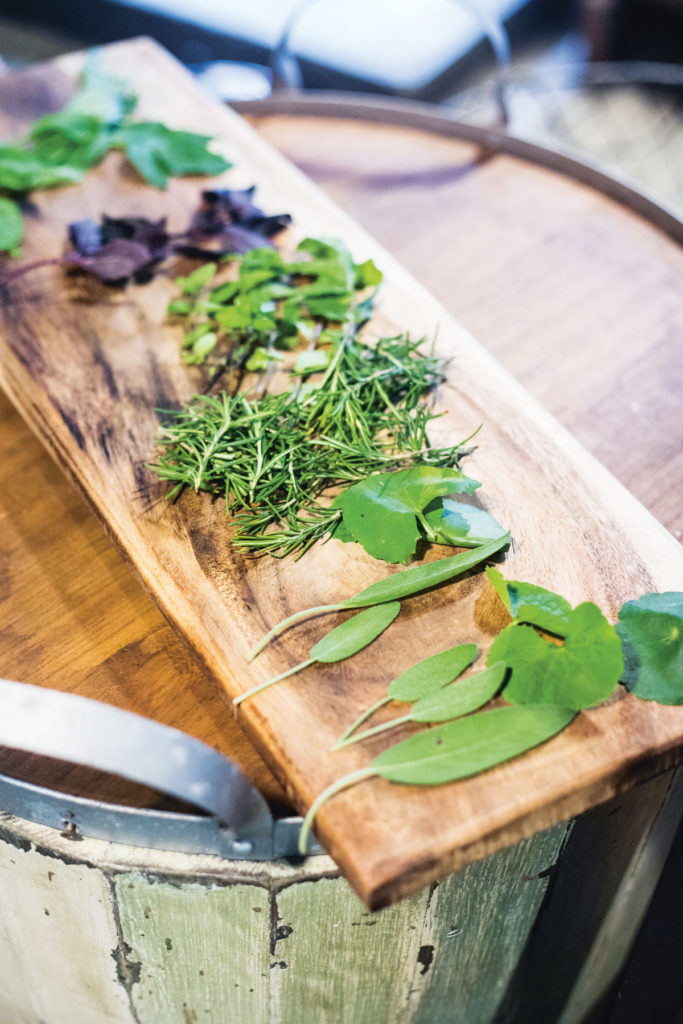Following the paradigm shift on what we eat follows a shift on what the land provides. It’s safe to say that herbs, the healthy flavor enhancer of dishes, are desired more than ever by both diner and chef. The role of the farmer then is to satisfy the desires of these two groups while satisfying the land that provides the harvest. The innovations don’t come in the form of high-tech equipment but in deep reverence for traditional methods and physical labor.
Gourmet Farms introduces herbs as a lifestyle; Malipayon Farms utilizes herbs as a key component in the bigger picture of agriculture; and Down to Earth seeks to introduce indigenous farms to the mainstream market. Herbs benefit well enough from organic farming and if the herbs from these farms show anything, it is that the soil of the land used for organic farming is in safe hands.
High on herbs

Located in Silang, Cavite, Gourmet Farms bills itself as a coffee company and is one of the first organic farms in the country. From the 1980s to the present, Gourmet Farms has been aiming to change perceptions of healthy living by making organic local produce commercially viable.
Its coffee blends are exported internationally and other products—spreads, dips, teas, and chips—are available in retail stores all over the country. It’s also been at the forefront of dining concepts that incorporate its organic produce such as farm-to-table with The Dining Room, fast food with Gourmet Farms Express, and gastrobars with the Al Fresco Gastrobar. It also hosts tours of its farm where the food concepts are located.
Of its many offerings, Gourmet Farms is most known for growing and selling culinary herbs, 18 to be exact: flat parsley, curly parsley, dill, onion chives, garlic chives, rosemary, tarragon, marjoram, sage, oregano, arugula, thyme, mint, fennel, lemon balm, lemongrass, coriander, and three kinds of basil (sweet, Italian, and purple).
“We don’t use any special facilities and high maintenance farm infrastructure, instead we maintain and improve our cultural farming practices with the use of organic farming techniques and procedure,” says Jaq Telo, events officer of Gourmet Farms.
These herbs are grown inside greenhouses and open fields on around three hectares of land maintained by up to 10 people at a time. “We don’t use any special facilities and high maintenance farm infrastructure, instead we maintain and improve our cultural farming practices with the use of organic farming techniques and procedure,” says Jaq Telo, events officer of the company. Given the company’s wide distribution and growth over the years, it’s safe to say that Gourmet Farms is one of the bigger farms out there that doesn’t compromise its yield to pesticides.
But the company still has its share of problems. Climate change, pests, and viruses are among them, and Gourmet Farms has properly addressed them with infrastructure, highly resistant seed varieties, and collaboration, the latter with research and development with government agencies, state colleges, and universities.
Organic farming on the rise
In the same area of Cavite sits Malipayon Farms, founded by former athlete-turned-farmer Gejo Jimenez. It focuses on special fresh produce. “A lot of restaurants were using dried [herbs]. If they were fresh, would they buy it? They did.”
Jimenez started in 2007 under the name Kitchen Herbs Farm but decided on Malipayon Farms as a catchier alternative. “’Malipayon’ means happy in Ilonggo,” Jimenez mentions, and by the looks of it, he’s happy being both proprietor and delivery man to his clients: Jordy Navarra of Toyo Eatery, Chele Gonzalez, and Margarita Forés, to name a few.
Malipayon Farms practices organic farming methods but also an alternative procedure known as biodynamic farming, recognized for considering the soil as a single organism affected by many forces at work. “We grow many things to keep this diversity in balance. I can’t remove everything else because we don’t know how it would affect the land.”
“Organic farming is more labor-intensive compared to other farming methods, but rewards a fresher, gentler flavor,” says Gejo Jimenez of Malipayon Farms.
Aside from the herbs that they grow, which include five varieties of mint, Italian oregano, dill, cilantro, tarragon, and thyme, Jimenez grows what the chefs request and what he can grow on his land. There are patches of paco he received from a friend all the way in Batanes as well as adlai stalks he received from another. Some patches of the farmland are covered in compost to retain moisture and kakawate stalks form a natural barricade to the plots of land.
The herbs are sealed and packed in plastic resealable bags, and the whole plot is managed by more than two dozen employees at a time. Jimenez himself delivers the produce straight to the kitchens in cold storage twice a week. “Organic farming is more labor-intensive compared to other farming methods but rewards a fresher, gentler flavor.” Focusing on harmony, Jimenez stresses the need for consumers to be informed on what they pick since it determines what chefs buy and what farmers grow.
“When you look at the food and beverage [industry], you can’t not look at agriculture,” Jimenez stresses. He shares an example in which herbs with holes in their leaves are still safe for consumption and have the same flavor but are rejected by kitchens whose customers would complain about them. Jimenez makes use of these unwanted greens by turning them to shredded mulch to feed back into the soil.
More than garnish

Another farm that practices biodynamic farming is Down to Earth, which grows produce in Bukidnon but distributes in Metro Manila. It also produces free-range pork and grass-fed beef and dairy, grows specialty produce, cures meats, and preserves vegetables.
Niccolo and Paula Aberasturi are proprietors of what began as a weekend market venture at their children’s school and turned into a full-time business that distributes to Rustan’s Supermarket. Their store in Yakal St., Makati City shows the array of products they have produced and developed over the years. In the realm of herbs, Down to Earth showcases something special: indigenous herbs used by natives in Bukidnon for medicinal use, which the couple promote for culinary use too.
Niccolo grew up in a family of farmers in Cagayan de Oro and began organic farming in the early ‘90s. With the help of locals in his province, he found these herbs and brought them back to the city to grow. “Aside from the usual herbs, like thyme, oregano, and basil, we have these indigenous herbs like gotukola and yahong-yahong,” he says.
“You can see the difference from 10 years ago. In biodynamic farming, you see the patterns of the weather. The farmers in Bukidnon are having a hard time figuring out when to plant because of the weird weather,” says Niccolo Aberasturi
Aside from herbs, Down to Earth explores the diversity in local flora and fauna with baby cucumbers or “gherkins” as they are called, which are sold as an addictive snack, and purple heirloom corn from Cebu, known as tapul, as a better alternative to Japanese corn because of its anthocyanin content, which has positive health effects on the body.
As business grows steady and the indigenous herbs are slowly introduced to the market, Niccolo expresses concern at the rising climate that affects the plants. “You can see the difference from 10 years ago. In biodynamic farming, you see the patterns of the weather. The farmers in Bukidnon are having a hard time figuring out when to plant because of the weird weather.”














































